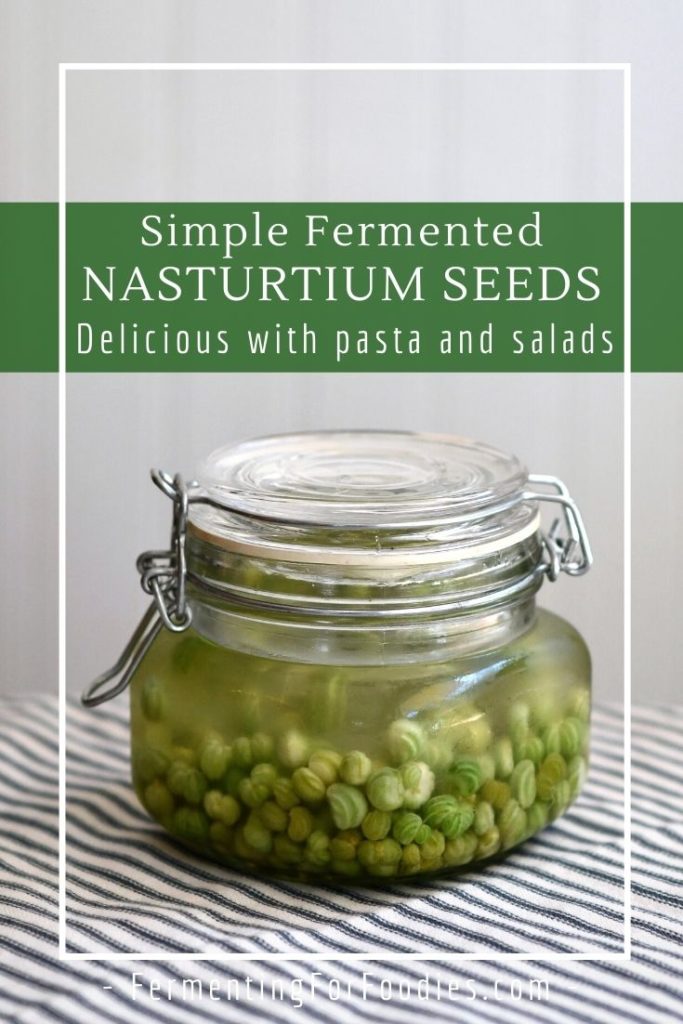
Fermented nasturtium seed pods are a simple delicious substitute for capers. And if you grow nasturtiums then you probably have a ton of nasturtium seeds because they tend to make an abundant crop!
Harvesting For Fermented Nasturtium Seeds
The only trick to making fermented nasturtium seeds is to harvest the seeds while they are still young and green. Usually, I start harvesting nasturtium seed pods around the middle of July. I harvest every 3 days, collecting any seeds that are a decent size.
However, that doesn’t mean that I have a bunch of different jars of fermenting nasturtium seeds in my kitchen cupboard. My patio planters aren’t that large. So it takes me all summer to fill a decent-sized jar.
Continuous Fermentation
Instead, I set up a continuous fermentation brine. Here’s how:
- The first time I collect my seeds, I set up the ferment, with the full 1/2 cup of water as described in the recipe.
- After 3 to 5 days, when everything is bubbling nicely, I pop the fermented nasturtium seeds in the fridge. (If I had a garage or cellar, I’d store it there instead. But in my urban home, the fridge is my only cold storage option).
- The next time I collect seeds, I add them to the jar in the fridge. The cool temperature doesn’t completely stop the ferment. It just slows it down.
- By the end of the summer I have a jar full of fermented nasturtium capers!
How to serve nasturtium “capers”
I have been making nasturtium capers for quite a few years. They are a perfect way to add a burst of flavor to a meal. Here are a few recipes that are ideal for fermented nasturtium seeds:
- A probiotic Niciose salad
- Pasta with broccoli
- A posh pizza topping
- Pickle them for long term storage
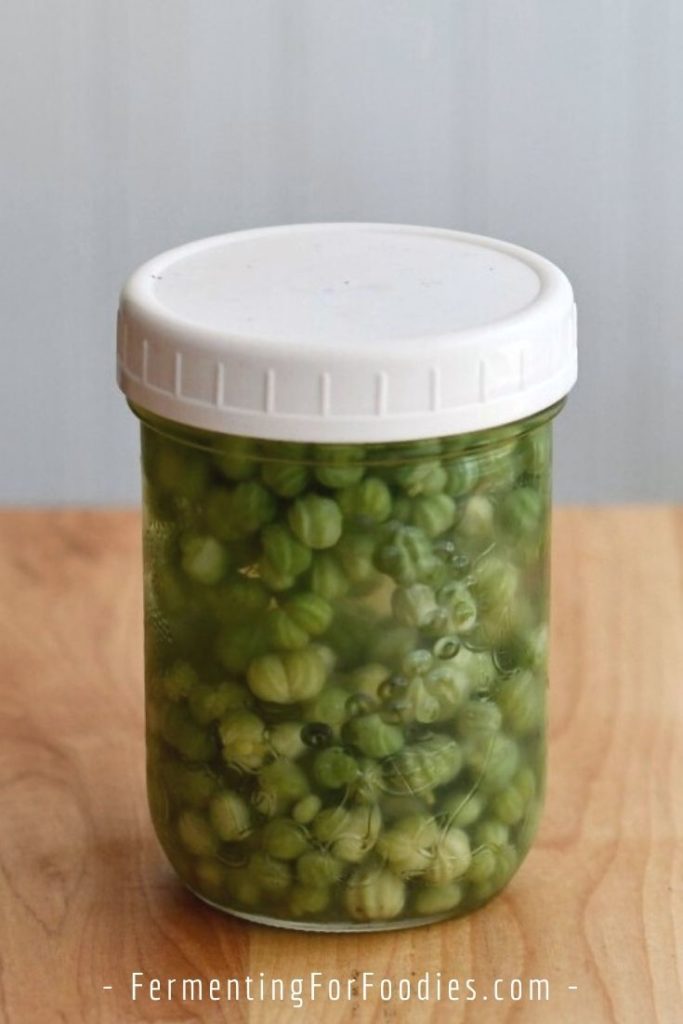
Fermented Nasturtium Seed Pods
Fermented nasturtium seeds are the gardener’s alternative to capers. They are easy to make and add a ton of flavor to all sorts of dishes. Try them on salads, pizza, or pasta! See the section above for an option for a continuous ferment, so you can harvest nasturtium seeds all summer long!
- Prep Time: 5 minutes
- Total Time: 5 minutes
- Yield: 2 cups 1x
- Category: Pickles
- Method: Fermented
- Cuisine: Italian
- Diet: Vegan
Ingredients
- 2 cups of fresh nasturtium seeds (or harvest slowly, as described in the section above)
- 1 1/2 tsp salt (non-iodized)
- 1 Tbsp culture (optional, see notes)
- 1/2 cup water (chlorine-free)
- Additional flavorings (see notes)
Instructions
- Mix the salt and water in a 2 cup jar to form a brine. Stir in the culture, if using one.
- Gently wash the nasturtium seeds and put them in the jar.
- No need to use a weight. The nasturtium seeds will sink as they ferment. Just cap with a lid that will allow gas to escape, as this ferment may bubble. For example, it can be capped with a loose lid, a pickle pipe or use a fido jar.
- Allow to ferment at room temperature for 3-5 days.
- After fermenting, store in the fridge. Use within 1 month or pickle the seeds for long-term storage.
- Fermented nasturitum seeds can be a bit smelly (a bit like fermented cauliflower). However, they are delicious!
Notes
- If this is your first time fermenting, read up on the Fermenting Basics to avoid making a mistake with this very special crop.
- A starter isn’t required, particularly if you are planning on pickling the seeds after fermenting. Feel free to use the brine from another vegetable ferment or a purchased starter. However, nasturtiums should naturally start to ferment with just salt-water brine.
- It is nice to add additional flavors to the nasturtium seeds. Add a strip of lemon peel, 1 clove of garlic, or a sprig of fresh thyme to the ferment.
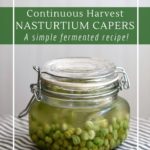
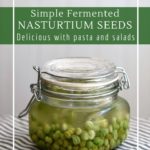
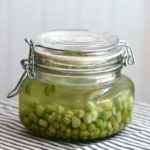
VERY COOL idea! This might work using mallow seeds as well, tons of those too 🙂 I have yet to try to make cheese from mallow seeds, but hoping to one year. summer’s been a bit wonky this year, but will see how many seeds I can collect. Ever made mallow cheese?
I’ve never grown mallow… and the only time I used it was as a dried herb. I’m definitely intrigued!
Och, so good. I now have a new use for my nasturtiums in the fall. We plant a wall of them in our estate, and this makes me excited for when the colours die down.
Does not using a culture starter make a difference to the fermenting time?
A starter culture definitely would speed up the fermentation time, but it’s only about 3-4 days without. Enjoy!
Hello Emillie,
I’m in NZ where Nasturtium is now making many seeds. I started the ferment 2 days ago and it’s bubbling really well but also today started emitting a sulphurous smell. Is that ok? I got plenty of seed here, so I can make it straight in one batch, how long should it ferment in the fridge in total? 2-3weeks enough?
I just finished eating my fermented nasturtium seeds. They’re probably ready to eat after 2 weeks but will last for a good long time. My nasturtiums were done at the end of August. They do get a bit stinky… similar to fermented cauliflower. But that mostly is just when you pop open the jar. The seeds themselves aren’t so strong. Enjoy!
Awesome! Thanks Emilie